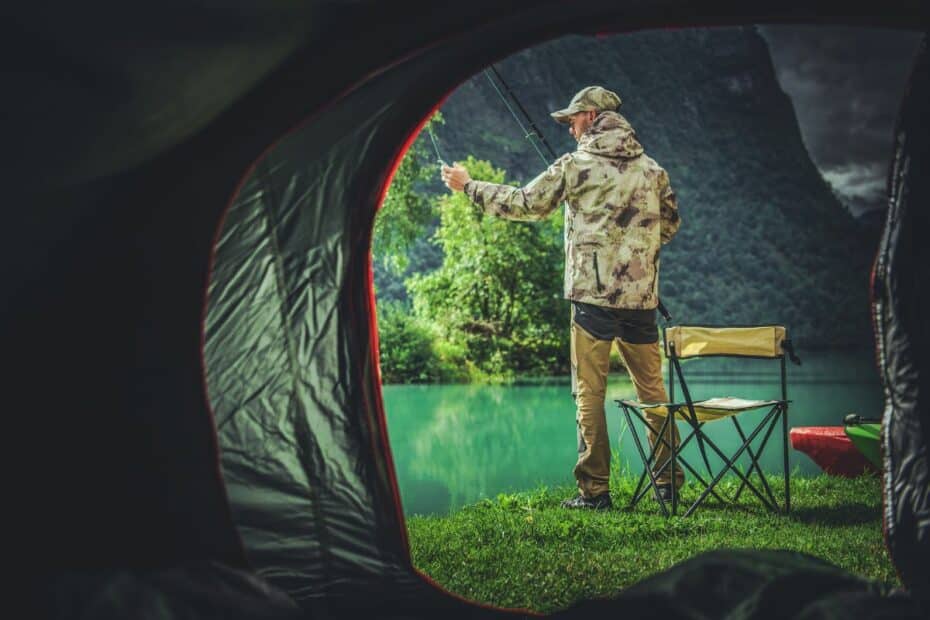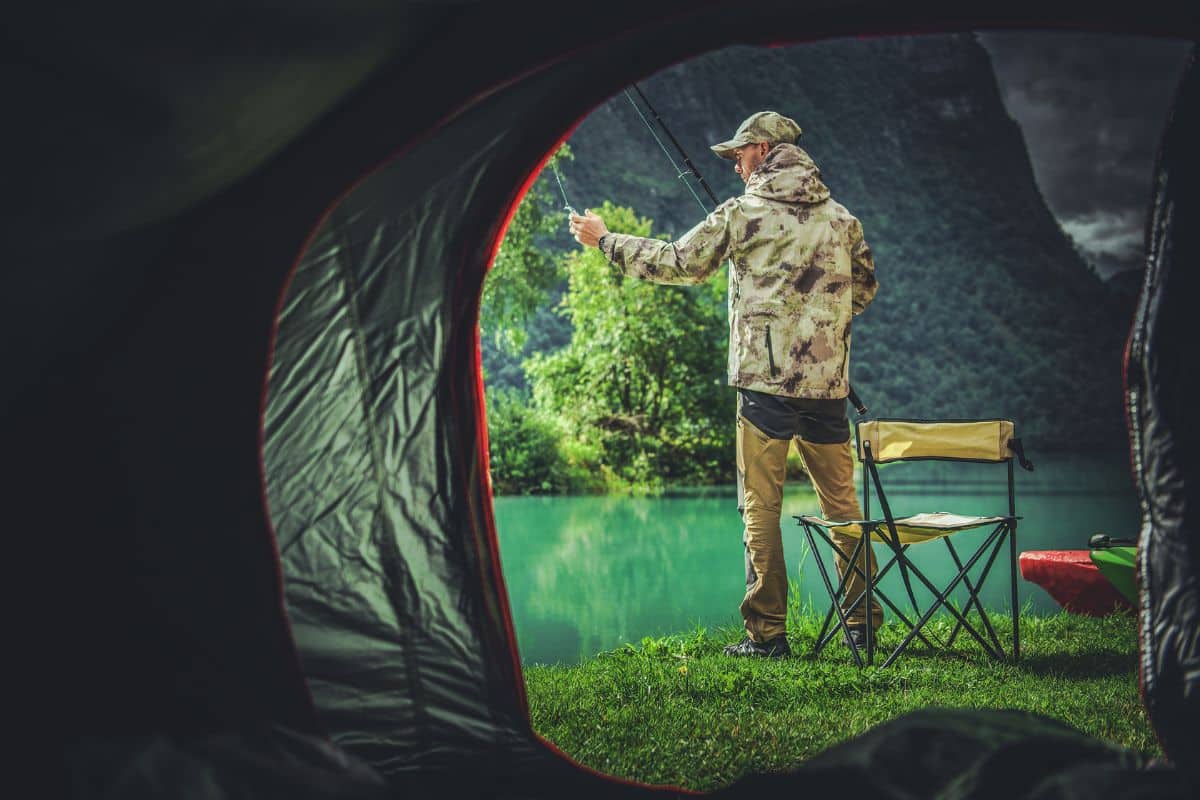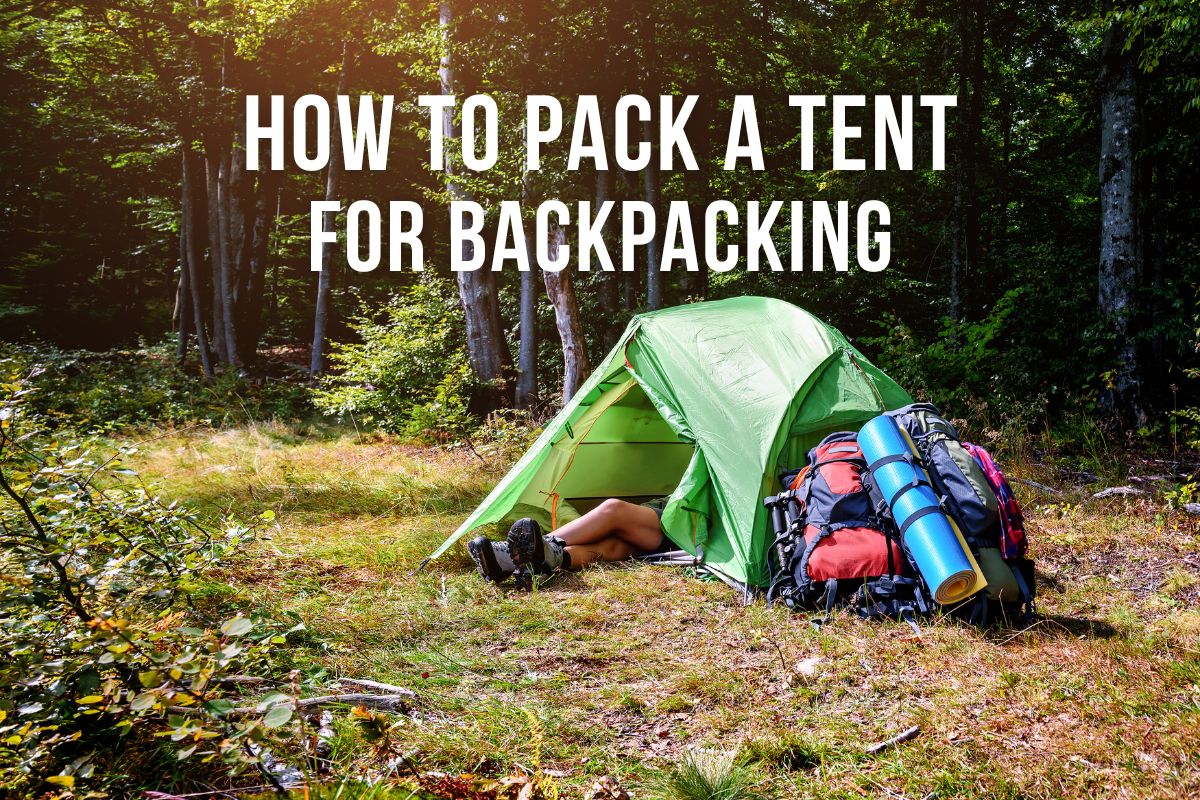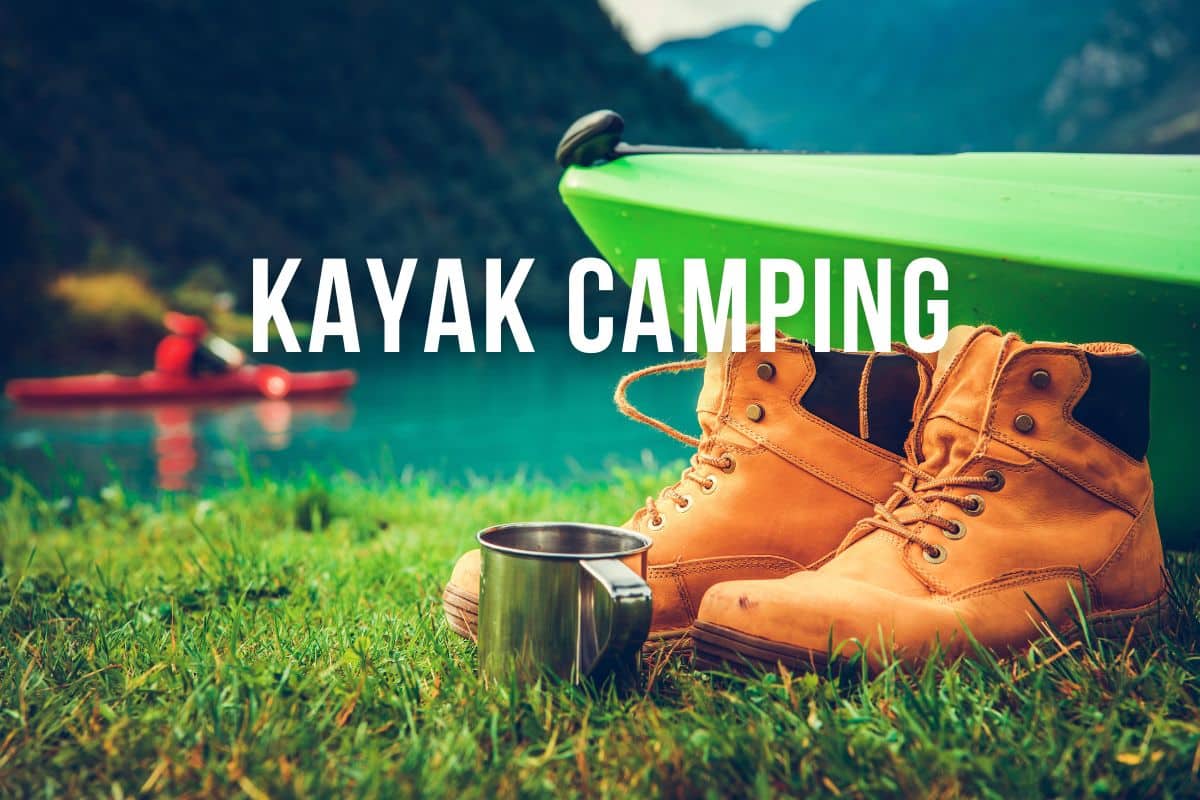Europe is a continent of boundless natural beauty, offering diverse landscapes that are an outdoor enthusiast’s dream. The opportunity to blend the thrill of fishing with the tranquility of camping creates an adventure unlike any other. From the captivating Norwegian fjords to the rugged Scottish Highlands and the pristine Swiss Alps to the serene Swedish archipelago, Europe offers an array of picturesque fishing and camping destinations waiting to be explored.
This comprehensive guide will be your roadmap to planning and executing the perfect fishing and camping in Europe, ensuring an unforgettable and rewarding experience.
1. Norwegian Fjords: A Fishing Haven

Norway’s fjords are renowned worldwide for their breathtaking beauty and rich fishing opportunities. These deep, narrow inlets carved by glaciers offer a unique fishing experience against majestic cliffs and crystal-clear waters. The fjords are a natural wonder and a paradise for anglers seeking diverse fish species.
Fishing Opportunities: The Norwegian fjords offer a wide variety of fish species to target, making it a dream destination for fishing enthusiasts. From the depths of the fjords to the shallower coastal areas, you’ll find a plethora of options:
- Cod: The Norwegian fjords are famous for their cod fishing. These waters are home to the world’s largest cod, allowing anglers to battle these powerful fish. The colder months are particularly productive for cod fishing.
- Halibut: Halibut, another prized catch, inhabits the deeper parts of the fjords. These flatfish can reach impressive sizes, providing an exhilarating challenge for anglers.
- Salmon and Trout: Some fjords are known for their salmon and trout populations. Rivers flowing into the fjords create ideal conditions for these species. The combination of freshwater and saltwater environments leads to robust and healthy fish.
Lofoten Islands: When considering a fishing and camping expedition to the Norwegian fjords, the Lofoten Islands stand out as an unforgettable destination. These islands in the Arctic Circle offer a unique blend of stunning landscapes and unparalleled fishing opportunities. The Lofoten Islands are renowned for their vibrant fishing villages, dramatic cliffs, and the opportunity to witness the mesmerizing Northern Lights.
Camping by the Fjords: Camping along the shores of the Fjords provides an intimate connection with nature and an opportunity to immerse yourself in the stunning surroundings. Wake up to the sound of lapping waves and enjoy awe-inspiring sunsets over the water. Numerous campsites offer basic facilities and picturesque views, making them an ideal base for your fishing adventures.
Local Fishing Culture: Engaging with the local fishing culture adds a layer of authenticity to your experience. Many fishing villages along the fjords have deep-rooted traditions and histories tied to fishing. Take the opportunity to interact with local fishermen, learn about their techniques, and join a fishing charter to explore the fjords from the water.
Weather Considerations: It’s essential to be prepared for variable weather conditions when fishing and camping in the Norwegian fjords. The coastal climate can change rapidly, so pack layers of clothing, waterproof gear, and adequate protection against the cold. Checking weather forecasts and staying informed about local conditions is crucial for safety.
2. Scottish Highlands: A Wilderness Escape
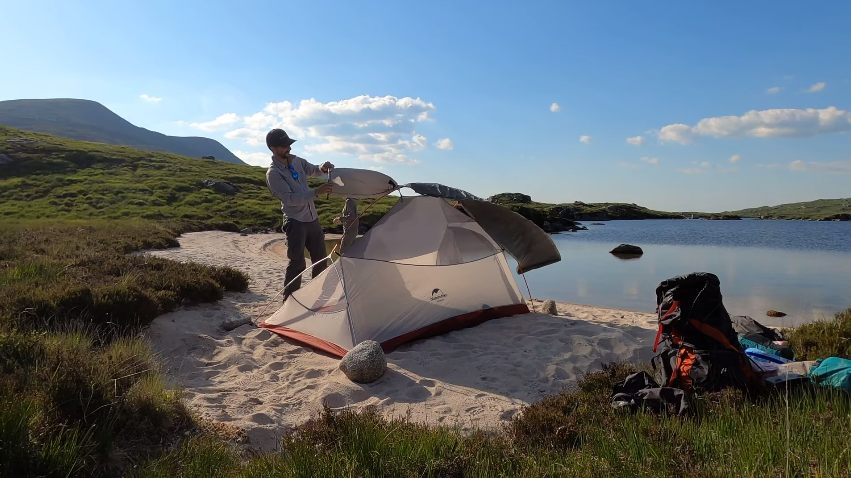
The Scottish Highlands, with their rugged landscapes, ancient castles, and legendary lochs, offer a true wilderness escape for those seeking a fishing and camping adventure in Europe. From the misty moors to the tranquil lochs, this region is steeped in history and natural beauty, making it a must-visit destination for outdoor enthusiasts.
Planning Your Highland Adventure:
Selecting the Perfect Location: Research the various lochs and rivers within the Scottish Highlands to determine the best fishing spots. Loch Ness is an iconic choice, known for its mythical creature and abundant trout and salmon populations. The River Spey is famous for its salmon fishing, while Loch Lomond offers diverse angling opportunities.
Fishing Seasons and Regulations: Familiarize yourself with your chosen location’s fishing seasons and regulations. Different areas may have rules regarding catch limits, fishing methods, and permitted species. Acquiring the necessary permits and licenses is essential to avoid legal issues.
Camping Permits and Sites: Look into camping permits and designated camping sites in the area. Some locations may require permits for wild camping, while others have established campsites with facilities. Research and make reservations if needed, as camping spots can fill quickly, especially during peak seasons.
Navigating the Wilderness:
Trail Maps and Navigation: Obtain detailed trail maps and navigation tools for the area you plan to explore. The Scottish Highlands can be challenging to navigate, so having a reliable map, compass, or GPS device is essential for safety and ensuring you stay aware of the situation.
Safety Precautions: The Highlands’ rugged terrain requires careful attention to safety. Let someone know your planned route and expected return time before setting out. Be prepared for rapidly changing weather conditions, and carry a basic first aid kit, emergency shelter, and communication devices.
Camping and Wilderness Etiquette:
Responsible Camping: Adhere to guidelines that minimize ecological harm. Carry out all litter, handle waste responsibly, and refrain from harming plants. Ensure you leave your campsite in its original state, preserving the untouched allure of the Highlands.
Respect Wildlife: The Scottish Highlands are home to various wildlife, including deer, birds of prey, and even elusive wildcats. Maintain a respectful distance and refrain from feeding or approaching animals. Respecting their habitat ensures their continued presence for generations to come.
Connecting with the Local Culture:
Local Traditions: Engage with the rich history and culture of the Highlands by visiting local towns, exploring ancient castles, and learning about the traditions that have shaped the region. Immerse yourself in the Highland way of life by interacting with locals and learning about their connection to the land.
Local Cuisine: Sample traditional Scottish dishes to enhance your cultural experience. Try haggis, neeps, tatties, and freshly caught fish cooked over a campfire. Engaging in local culinary delights adds a unique dimension to your wilderness escape.
3. Swiss Alps: Alpine Fishing Paradise

Nestled amidst the grandeur of the Swiss Alps lies a hidden gem for fishing and camping enthusiasts. The Swiss Alps offer a unique blend of breathtaking scenery and abundant fishing opportunities. From pristine alpine lakes to rushing mountain streams, this guide will walk you through how to make the most of your fishing and camping adventure in this captivating alpine paradise.
Research and Destination Selection:
Identify Fishing Locations: Research the various lakes and rivers within the Swiss Alps that offer fishing opportunities. Lake Geneva, Lake Lucerne, Lake Zurich, and many others are known for their diverse fish populations.
Fishing Regulations: Understand local fishing regulations and seasons. Acquire the necessary fishing licenses or permits, typically obtained online or from local authorities. Complying with regulations ensures a responsible and sustainable fishing experience.
Fishing Gear:
Select Appropriate Gear: Choose fishing gear suited to the specific waters you plan to fish. Lightweight spinning or casting rods are versatile choices for alpine lakes. Consider the best crankbait reel and a heavier rod for larger fish or faster-flowing rivers.
Tackle and Bait: Pack a variety of lures, flies, and baits to cater to the preferences of different fish species. Trout, perch, and pike are commonly found in alpine waters. Research the local fish species and their feeding habits to optimize your tackle selection.
Clothing and Accessories: Dress in layers to accommodate changing weather conditions. Waterproof and windproof clothing is essential, as alpine weather can be unpredictable. Remember polarized sunglasses to spot fish in clear waters.
Camping Preparation:
Choose a Campsite: Research established campgrounds near your chosen fishing locations. Alternatively, inquire about wild camping regulations for a more immersive experience. Prioritize safety and respect for the environment when selecting a campsite.
Camp Equipment: Invest in lightweight, compact camping gear suitable for alpine conditions. A four-season tent, warm sleeping bag, insulated sleeping pad, and portable camping stove are essentials. Pack efficiently to minimize the weight of your gear.
Food and Cooking: Plan and pack meals that are easy to prepare and nutritious. Consider dehydrated camping meals, energy bars, and trail mixes. Pack a compact camping stove for cooking, and adhere to Leave No Trace principles when disposing of waste.
Safety and Conservation:
Weather Awareness: Alpine weather can change rapidly. Stay informed about weather forecasts and be prepared for sudden temperature drops, rain, or snow. Dress in layers to regulate body temperature.
Wildlife Encounters: Research the local wildlife and practice proper food storage to avoid attracting animals to your campsite. Be cautious around potentially dangerous animals, such as bears or mountain lions.
Leave No Trace: Respect the fragile alpine ecosystem by following Leave No Trace principles. Pack out all trash, minimize your impact on vegetation, and use designated camping areas whenever possible.
4. Swedish Archipelago: Coastal Serenity

The Swedish archipelago is a coastal paradise that combines the beauty of the Baltic Sea with a unique island camping experience. With thousands of islands to explore, each offering charm and fishing opportunities, this destination promises a blend of tranquility and adventure that is hard to match. In this guide, we’ll delve into the details of planning a fishing and camping trip to the Swedish archipelago, ensuring you make the most of this coastal serenity.
Choosing Your Islands:
Research and Map Exploration: The Swedish archipelago encompasses a vast area, so research is crucial. Identify which islands are accessible and have camping facilities or permissions for wild camping. Consider factors such as distance from the mainland, transportation options, and the types of fish you can expect to catch.
Popular Archipelagos: The Stockholm Archipelago and the Gothenburg Archipelago are the most famous. Stockholm’s archipelago is characterized by its proximity to the capital city, while the Gothenburg Archipelago offers a more remote and rugged experience.
Camping by the Water:
Permitted Areas: Check the regulations for camping on the islands you plan to visit. Some islands allow wild camping, while others have designated camping spots. Be sure to follow the Leave No Trace principles and respect any guidelines local authorities provide.
Camping Gear: Since you’ll be island hopping, choose lightweight camping gear that is easy to transport. A portable tent, sleeping bag, and camping stove are essential. Consider gear that can withstand coastal conditions, including wind and saltwater.
Pack Essentials: Given the remote nature of some islands, pack essentials like ample food, clean drinking water, and a first aid kit. A reliable means of communication, such as a satellite or fully charged mobile phone, is also a safety precaution.
Fishing Opportunities:
Species Diversity: The Baltic Sea is home to various fish species, including cod, herring, mackerel, and flatfish. Research the types of fish you can catch based on the season and location. The local fishing regulations will provide information on size limits and catch quotas.
Fishing Techniques: Depending on the species you’re targeting, you might use methods like trolling, casting, or bottom fishing. Adjust your tackle and bait accordingly to maximize your chances of success.
Interact with the Local Culture:
Local Knowledge: Engage with locals to learn the best fishing spots and techniques. Many island communities are strongly connected to fishing; their knowledge can enhance your experience.
Visit Coastal Villages: Take breaks from fishing and camping to explore nearby coastal villages. Immerse yourself in the local culture, try regional cuisine, and learn about the islanders’ way of life.
Weather and Safety:
Weather Awareness: Coastal weather can change rapidly, so stay informed about forecasts and pack weather-appropriate clothing. Prepare for wind, rain, and sun.
Navigation and Safety Equipment: If you bring your boat, ensure it’s equipped with navigation tools, life jackets, and safety gear. If you’re renting a boat, familiarize yourself with its operation.
Conclusion
Fishing and camping in Europe offer an unmatched blend of adventure, natural beauty, and cultural exploration. The continent’s diverse landscapes provide a canvas for crafting unforgettable memories. By selecting the perfect destination, equipping yourself with essential gear, adhering to responsible fishing and camping ethics, and immersing yourself in the local culture, you’re poised to embark on a journey that promises lifelong stories and cherished moments. So, gather your gear, chart your course, and immerse yourself in the harmonious symphony of fishing and camping across the captivating European landscapes. Your journey awaits, and with careful planning, it will be an unforgettable chapter in your outdoor adventures.
Read more about Adventure travel:
